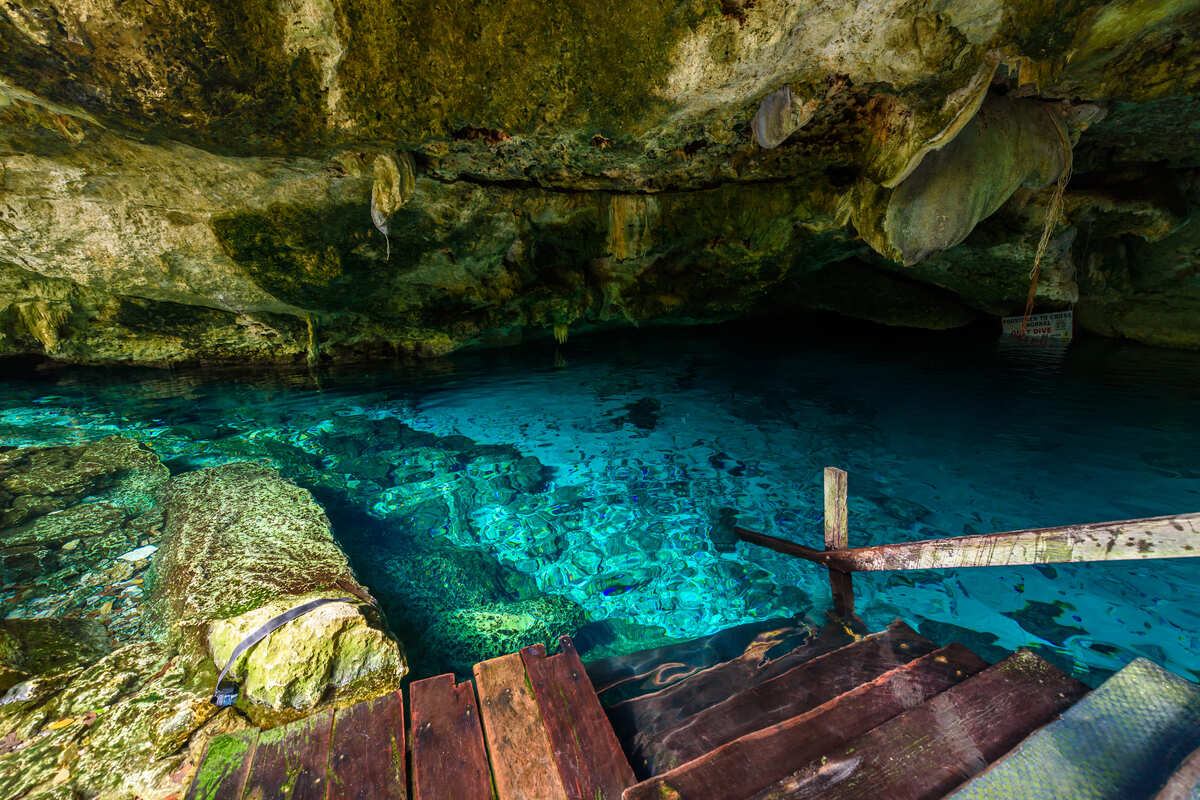Share The Article
Last Updated
Three of Mexico’s most popular cenotes located in Tulum have been issued safety and health warnings after local authorities detected a substantially high level of bacteria in the water, the kind that’s particularly harmful to visitors. Now, they are being urged not to swim in these areas, or even avoid the popular attraction altogether.

Cenote is a regional term of the Yucatan Peninsula of Mexico referring to caves filled with turquoise-colored waters. In Ancient Times, the extinct Mayan civilization used to carry out sacrificial offerings in these nature-made chambers, and many of them have retained this sacred status up to this day, despite becoming tourist hotspots.
Unfortunately, if you’re visiting Tulum in the near future, you may want to double check these advisories before diving into the nearest cenote:
Which Cenotes Are Affected?

According to the Directorate for Protection Against Sanitary Risks of Quintana Roo, also known by its Spanish acronym of COFEPRIS, a significant amount of bacteria, such as Escherichia Coli, commonly known as E. Colihas been found in at least three cenotes close to Tulum and surrounding areas. They are:
- Cristal Cenote
- Calvera Cenote
- Cenote House
Cristal Cenote, an open-air natural pool in the heart of the jungle that, due to its location just 10 km south of Downtown Tulum, makes for a top-rated day trip, just happens to be one of the most heavily affectedhaving failed the COFREPRIS water purity tests. As a result, tourists are being discouraged from swimming there.

Similarly, the world-famous, skull-shaped Calvera Cenote is facing an E. Coli infestation, with bathing, even for a short period of time, now posing a serious health risk. The lesser-known Casa Cenote, another open-air body of water where snorkeling activities are widely promoted, was the last to be declared a no-go zone.
Tourists Could Develop A Serious Life Threatening Condition When Ignoring Warnings
While several different bacteria can be found in the water, the one most likely to pose health risks is the aforementioned E. Coli. When contamination occurs, people report an extensive list of symptoms, varying from ‘severe stomach cramps’ to vomiting and even bloody diarrhea in serious cases. A moderate fever of less than 101F is also reported.

Contamination usually occurs upon ingestion of insalubrious water, and the course of the disease runs for roughly a week until symptoms clear up. With surveillance and the adequate treatment, most people will eventually recover, though it is worth noting a sizable percentage – up to 10% – will develop Hemolytic Uremic Syndrome (HUS).
E. Coli can be mild, but HUS is a life-threatening condition occurring on average seven days following the onset of symptoms, usually when diarrhea improves. The most common signs a patient has developed HUS is a sharp decrease in urinationweakness, as well as paleness of the cheeks and inside the lower eyelids.

The biggest complication with HUS is how it affects the kidneys, which may even stop working, leading patients to require hemodialysis and/or a kidney transplant. According to the United States Centers for Disease Control and Prevention, people with HUS should be routinely hospitalized in the event of a kidney function deterioration.
The entity informs that, although HUS is not exactly rare, affecting 10 in every 100 people contaminated by E. Colismost will recover from both the bacteria and its gravest stage ‘within a few weeks’. Sadly, ‘some’ will suffer permanent damage, such as acquiring lifelong kidney disease, or even die.
This can affect individuals of all agesno matter how immunocompetent.

Other Bodies Of Water Where The Bacteria Was Found
COFEPRIS now urges tourists to refrain from swimming in these sinkholes – the Cristal, Calvera and Casa Cenotes. Besides the three famous sinkholes in Tulum, the regulatory body identified a further 10 freshwater lakes and cenotes in Quintana Roo where higher levels of bacteria are present, including E. Colis.
Those are located close to the following municipalities:
- Solidarity
- Chimneys
- Othon P. Blanco

When visiting the Riviera Maya, we advise our readers to book water activities through reliable, specialized operators and follow the local guidance. A list of certified agencies selling tickets to safe attractions can be found here; alternatively, visitors can contact the Tourism Board at their destination to inquire about water safety at specific swimming spots.
How To Avoid Contamination By E. Colis
E. Colis is normally contract via the mouth, usually through food. However, cenotes are natural pools where the bacteria reproduces in abundance. This is not official advicebut in order to protect yourself, whenever visiting in a cenote in Mexico still open to the public, and where there are no visible ‘no swimming’ signs, make sure you:

- Don’t swim or enter in contact with the water when unsure it is safe
- Avoid submerging your head entering a cenoteespecially in Tulum and the aforementioned towns
- Never drink water from a cenote or freshwater sources that has not been deemed safe for consumption
More information on contaminated water can be found on the official COFEPRIS page.
Read More:
Travel Insurance That Covers Covid-19 For 2022
The Luxury Brand Nobu To Open Hotel In Tulum
7 Tips To Travel Stress Free During Your Fall Trip To Mexico
4 Reasons Why Cancun Airport Is The Smoothest Entry Point Into Mexico
Tourists Arriving In Cancun Will Automatically Get 180 Days In Mexico
This article originally appeared on Travel Off Path. For the latest breaking news that will affect your next trip, please visit: Traveloffpath.com
↓ Join the community ↓
The Travel Off Path Community FB group has all the latest reopening news, conversations, and Q&A’s happening daily!

SUBSCRIBE TO OUR LATEST POSTS
Enter your email address to subscribe to Travel Off Path’s latest breaking travel news, straight to your inbox
Disclaimer: Current travel rules and restrictions can change without notice. The decision to travel is ultimately your responsibility. Contact your consulate and/or local authorities to confirm your nationality’s entry and/or any changes to travel requirements before traveling. Travel Off Path does not endorse traveling against government advisories





